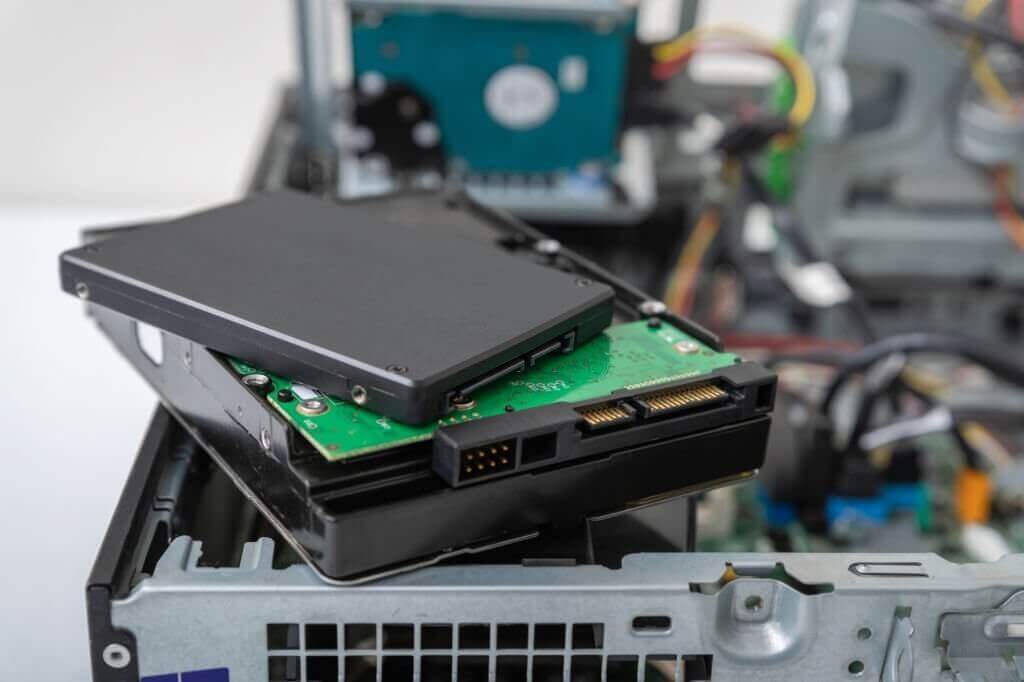It is possible to use both a solid state drive (SSD) and a hard disk drive (HDD) together in a laptop, and doing so can offer several benefits.
In this article, we’ll explore why you might want to use both types of storage in your laptop and how to set it up.
Why Use Both SSD and HDD in a Laptop?
One of the main benefits of using both an SSD and an HDD in a laptop is that it allows you to take advantage of the strengths of both types of storage. SSDs are known for their lightning-fast read and write speeds, which makes them ideal for storing and running operating systems and frequently-used programs and files.
HDDs, on the other hand, are much more affordable and are typically used for storing large amounts of data, such as photos, videos, and music.
Another advantage of using both SSD and HDD in a laptop is that it can extend the life of your computer. Using the SSD for frequently-used files and programs can reduce the amount of wear and tear on your HDD, which can help it last longer.
How to Set up SSD and HDD in a Laptop?
To set up an SSD and an HDD in a laptop, you’ll need to ensure that your laptop has both an SSD and an HDD bay. Most modern laptops have at least one SSD bay, but not all have an additional one for an HDD.
If your laptop only has one bay, you can still use both an SSD and an HDD together, but you’ll need to use a USB or Thunderbolt external drive enclosure to connect the HDD to your computer.
Once you have confirmed that your laptop can accommodate both SSD and HDD, you can begin setting it up.
The first step is to install the SSD on your laptop. If you’re using a new SSD, you’ll need to format it before you can use it. You can do this by going to Disk Management in the Control Panel and selecting the SSD drive. Once you’ve formatted the SSD, you can install your operating system.
The next step is to install the HDD on the laptop. Once again, you’ll need to format the HDD before using it. You can do this by going to Disk Management in the Control Panel and selecting the HDD drive.
Now you can use the HDD as a storage drive. You can move your files, music, videos, games, etc., to the HDD. This will free up space on the SSD and allow it to run more efficiently.
Conclusion
Using both an SSD and an HDD together in a laptop can take advantage of the strengths of both types of storage. SSDs provide lightning-fast read and write speeds, while HDDs are much more affordable and are ideal for storing large amounts of data.
Additionally, using both an SSD and an HDD can help extend your laptop’s life by reducing the amount of wear and tear on the HDD.
Overall, setting up both SSD and HDD in your laptop can be tricky, but with the right tools and patience, you can enjoy the benefits of both types of storage in no time.
Frequently Asked Questions
Can I use any SSD or HDD in my laptop?
It is important to check the compatibility of the SSD and HDD with your laptop before purchasing. Most laptops have a specific size and interface for the storage drives they can accommodate. Make sure to check the specifications of your laptop and match them with the SSD and HDD you plan to use.
Can I use an SSD and HDD of different capacities?
Yes, you can use an SSD and HDD of different capacities. It is often recommended to use a smaller capacity SSD (e.g., 128GB or 256GB) as the primary drive and a larger capacity HDD (e.g., 1TB or 2TB) as the secondary drive for storage.
Can I clone my existing drive to the new SSD or HDD?
Yes, you can clone your existing drive to the new SSD or HDD using cloning software. This will transfer the operating system, programs, and files from your existing drive to the new drive, allowing you to use your laptop as if nothing has changed.
However, you should be aware that if the new SSD or HDD size is smaller than the existing drive, you will need to resize the partitions accordingly.
Can I use both SSD and HDD as boot drives?
Yes, you can use both SSD and HDD as boot drives. However, using the SSD as the primary boot drive and the HDD as the secondary storage drive is typically recommended. This is because the SSD will provide faster boot times and improved performance for frequently-used programs and files.
Can I use both SSD and HDD in a RAID configuration?
Yes, SSD and HDD can be used in a RAID (redundant array of independent disks) configuration. RAID allows you to combine multiple drives into a single logical drive, providing improved performance, data redundancy, and increased storage capacity.
However, you should know that RAID configurations can be complex to set up and maintain.







